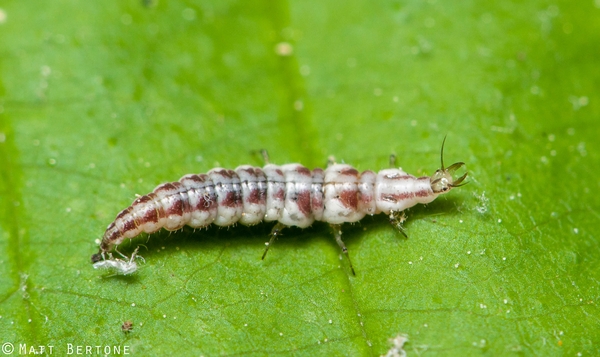More About Eco Bed Bug Exterminators Dc
More About Eco Bed Bug Exterminators Dc
Blog Article
The Ultimate Guide To Eco Bed Bug Exterminators Dc
Table of Contents9 Easy Facts About Eco Bed Bug Exterminators Dc DescribedMore About Eco Bed Bug Exterminators DcThe Definitive Guide for Eco Bed Bug Exterminators DcThe smart Trick of Eco Bed Bug Exterminators Dc That Nobody is DiscussingGet This Report on Eco Bed Bug Exterminators Dc
Because pesticides are toxic, they are likewise possibly dangerous to human beings, pets, various other organisms, and the setting. As a result, people who make use of chemicals or regularly been available in contact with them must comprehend the family member toxicity, prospective health results, and preventative actions to decrease direct exposure to the items they utilize. Danger, or risk, of using chemicals is the capacity for injury, or the level of threat entailed in utilizing a pesticide under a given set of problems.
However, applicators can decrease or nearly get rid of exposure-- and thus minimize hazard-- by following the tag directions, utilizing personal safety clothes and tools (PPE), and dealing with the pesticide properly. As an example, more than 95 percent of all chemical exposures come from facial exposure, primarily to the hands and forearms. By wearing a pair of unlined, chemical-resistant handwear covers, this type of direct exposure can be nearly removed.
The unsafe results that happen from a single exposure by any type of path of entrance are labelled "intense impacts." The 4 paths of direct exposure are facial (skin), inhalation (lungs), oral (mouth), and the eyes. Severe toxicity is identified by analyzing the dermal poisoning, inhalation poisoning, and oral poisoning of examination pets.
Everything about Eco Bed Bug Exterminators Dc
Severe toxicity is measured as the amount or concentration of a toxicant-- the a.i.-- required to kill half of the animals in an examination population. This step is usually expressed as the LD50 (lethal dosage 50) or the LC50 (deadly focus 50). Additionally, the LD50 and LC50 values are based on a solitary dose and are tape-recorded in milligrams of pesticide per kilo of body weight (mg/kg) of the examination animal or partially per million (ppm).
The lower the LD50 or LC50 value of a pesticide product, the higher its toxicity to people and pets. Pesticides with a high LD50 are the least poisonous to human beings if used according to the instructions on the item tag. The chronic poisoning of a chemical is determined by subjecting guinea pig to long-lasting direct exposure to the active component.
The persistent toxicity of a pesticide is a lot more challenging than intense poisoning to identify with research laboratory analysis. Products are classified on the basis of their loved one intense toxicity (their LD50 or LC50 values). Pesticides that are categorized as very poisonous (Poisoning Classification I) visit this website on the basis of either oral, dermal, or breathing poisoning should have the signal words DANGER and POISON printed in red with a head and crossbones symbol prominently presented on the front panel of the bundle tag.
The severe (solitary dosage) oral LD50 for pesticide products in this group varies from a trace quantity to 50 mg/kg. Direct exposure of a couple of drops of a material taken by mouth could be fatal to a 150-pound person. https://on.soundcloud.com/N4Bqmd4SgXTkLGzDA. Some chemical products have just the signal word DANGER, which informs you nothing about the intense toxicity, just that the product can trigger extreme eye damage or serious skin inflammation
Eco Bed Bug Exterminators Dc for Beginners
In this classification, the intense oral LD50 arrays from 50 to 500 mg/kg. A teaspoon to an ounce of this material might be fatal to a 150-pound individual (bed bug spray). Chemical products identified as either somewhat hazardous or relatively nontoxic (Toxicity Categories III and IV) are called for to have the signal word care on the chemical label

All pesticide toxicity values, worths the Consisting of, can be found on located product's Material Safety Product Sheet InformationMSDS). Pesticide labels and MSDS can be acquired from stores or produces - https://hub.docker.com/u/ecobedbug3xt. The signs and symptoms of pesticide poisoning can vary from a moderate skin irritation to coma or also fatality.
Because of possible health and wellness worries, pesticide users and handlers have to identify the typical signs and signs of chemical poisoning. The results, or symptoms, of pesticide poisoning can be extensively defined as either topical or systemic.
Little Known Facts About Eco Bed Bug Exterminators Dc.
Dermatitis, or swelling of the skin, is accepted as one of the most typically reported topical effect linked with pesticide exposure. Symptoms of dermatitis variety from reddening of the skin to rashes and/or blisters. Some people often tend to cough, wheeze, or sneeze when exposed to pesticide sprays. Some people react to the strong smell and annoying results of petroleum distillates utilized as service providers in chemical products.
This sign generally subsides within a few minutes after a person is gotten rid of from the direct exposure to the toxic irritant. Nonetheless, a reaction to a chemical product that creates somebody not just to sneeze and cough but also to create extreme intense respiratory signs and symptoms is more probable to be a real hypersensitivity or allergy.
Systemic effects are fairly different from topical effects. They usually happen away from the original factor of contact as an outcome of the pesticide being soaked up right into and distributed throughout the body. Systemic impacts typically include nausea, throwing up, fatigue, frustration, and digestive tract conditions. In sophisticated poisoning situations, the person may experience changes in heart rate, problem breathing, convulsions, and coma, which might cause death.
Report this page